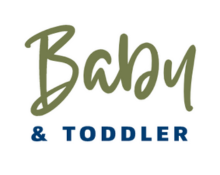
Combination feeding, also known as mixed feeding, refers to the practice of providing both breast milk and formula milk to a baby. This approach can be beneficial in various situations, such as when a breastfeeding mother needs to supplement her milk supply, when the baby has difficulties breastfeeding, or when the mother chooses to introduce formula for personal reasons. Here are some important considerations and tips for combination feeding:
Establish breastfeeding first: It’s generally recommended to establish a strong breastfeeding relationship before introducing formula. This helps ensure a good milk supply and allows the baby to become accustomed to breastfeeding.
Seek guidance from a healthcare professional: If you’re considering combination feeding, it’s helpful to consult with a lactation consultant or healthcare provider who can provide personalized advice and support based on your specific circumstances.
Maintain breastfeeding frequency: To maintain your milk supply, continue breastfeeding your baby as frequently as possible. Breastfeed before offering formula milk and offer the breast as often as your baby shows hunger cues.
Use the paced feeding method: If you’re bottle-feeding breast milk or formula, use the paced feeding technique to mimic the flow and pace of breastfeeding. This involves holding the bottle in a more upright position, allowing your baby to take breaks, and responding to their cues for hunger and fullness.
Choose a suitable formula: If you’re introducing formula, select a formula that is appropriate for your baby’s age and follow the instructions for preparation and feeding. Consult with your healthcare provider if you have any concerns or questions about formula selection.
Gradual transition: If you’re transitioning from exclusive breastfeeding to combination feeding, you can start by replacing one breastfeeding session with a bottle of formula. Gradually increase the number of formula feeds as needed.
Pumping and milk storage: If you’re replacing breastfeeding sessions with formula, it’s important to continue pumping to maintain your milk supply and to have breast milk available for bottle feeding. Store expressed breast milk properly and follow guidelines for storage and handling.
Monitor your baby’s response: Observe your baby for any signs of discomfort, allergies, or feeding difficulties when introducing formula. If you notice any concerning symptoms, consult with your healthcare provider.
Seek support: Combination feeding can be emotionally and practically challenging. Reach out to breastfeeding support groups, lactation consultants, or other mothers who have experience with combination feeding for advice, encouragement, and guidance.
Remember, the decision to combination feed is a personal one, and it’s important to do what works best for you and your baby. With proper planning, support, and monitoring, combination feeding can be a successful way to provide nutrition and meet the needs of your baby.
